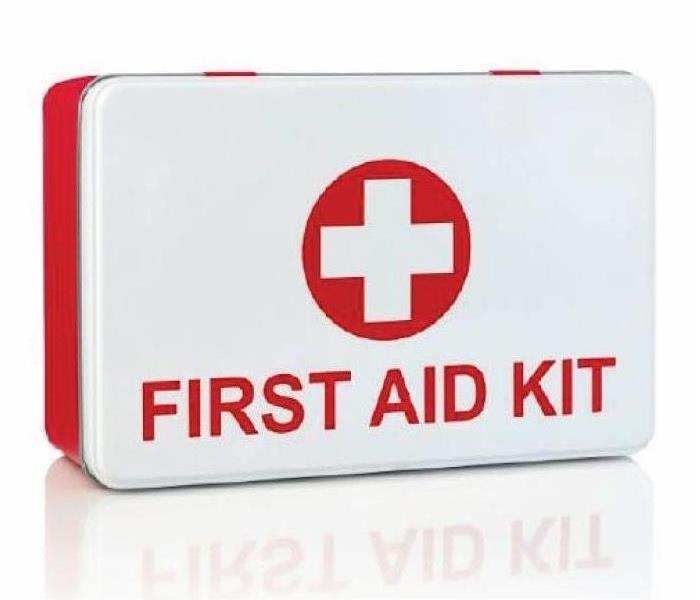First-Aid Kits in the Office: What You Need and How to Manage It
8/22/2019 (Permalink)
First-aid kits are a necessary but often forgotten item in your office. When an accident occurs, however, no tool is more valuable.
If you haven’t thought about your company’s kit in a while, now would be a good time to refresh yourself. The Occupational Safety and Health Administration (OSHA) requires that small work sites, including offices, should have a well-stocked and easily accessible first-aid kit on hand for employees. More than one kit is often necessary for spaces with at least four employees.
What to Include
It’s generally less expensive (and time-consuming) to purchase a prestocked first-aid kit. These kits should include, at a bare minimum, the following types of items:
- Gauze pads (multiple sizes)
- Box adhesive bandages
- Gauze roller bandages
- Triangular bandages
- Wound cleaning supplies (such as moistened towelettes, cotton balls and hydrogen peroxide)
- Scissors
- Tweezers
- Adhesive tape
- Latex gloves
- Resuscitation equipment (such as a resuscitation bag)
- Elastic wraps
- Splint
- Directions for obtaining emergency service
- A blanket
Many kits offer more than this, and some offer specialized components designed to meet the needs of various concerns — such as offices where there’s a risk of chemical exposure. But just having and stocking a kit properly is the first step.
Managing an Emergency Medical Kit
Kits aren’t meant to be tossed into the closet and forgotten about until there’s an emergency. Additionally, they shouldn’t be used constantly without replenishing their supplies. Here are a few tips for ensuring supplies are properly managed:
- You first want to make sure supplies are readily accessible. Inform employees upon hiring where first-aid supplies are, when to use them and how to access them in an emergency.
- Store kits in an area where they’re easily accessible but also safe from exposure to heat, cold or other damage. That could be in a cabinet in your break room that’s away from the windows and food.
- Once it’s all stocked, check on the supplies in the first-aid kit at least one time a month. Link a specific event that happens during each month (like when you conduct inventory) with restocking supplies in the office emergency kit so you don’t forget.
You can consider additions to the kit, such as over-the-counter pain medications and medications for treating allergic reactions, but inform employees of the risks of using these products upon hire.
Beyond the Supplies
Creating an emergency medical plan should also be at the top of your to-do list. All management or other office personnel should be given specific training on properly assessing medical situations and responding to them. This includes simple steps to caring for a bleeding wound to more intense problems related to administering CPR.
Keeping first-aid kits simply makes sense. Proper training of personnel in both using and managing these kits, however, is also important. It’s advisable to have twice the amount of supplies on hand, perhaps in two different locations, as a backup. This is only effective, though, if your office team knows when and how to use these products properly.





 24/7 Emergency Service
24/7 Emergency Service
